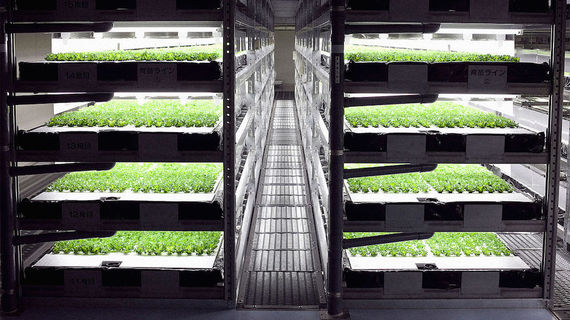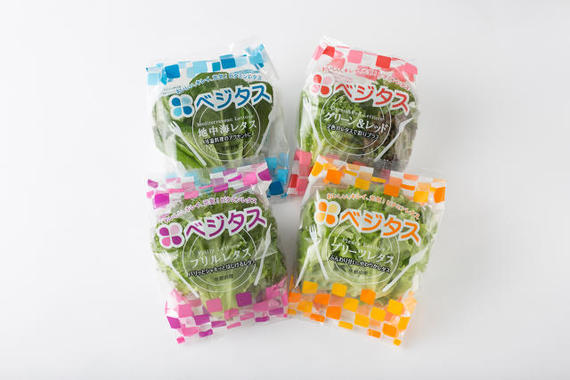
By Don Willmott
When is a vegetable farm not a vegetable farm? When you take away the humans, automate the work, and create a vegetable factory in its place. In Japan, where robots do everything from rolling sushi to directing traffic, it's no big stretch to enlist them to grow lettuce, at least according to SPREAD, a Kyoto-based company looking to expand its nascent vegetable factory business exponentially.
In a SPREAD factory, robots plant lettuce seeds and then do the work of transplanting them, monitoring them, harvesting them, and taking them to be packed. The company's first 30,000 square-foot greenhouse-like factory, complete with artificial lighting, has been operational for nine years and supplies 21,000 heads of lettuce daily all around Tokyo at prices comparable to traditionally farmed lettuce. Unlike a traditional farm, however, the factory can keep producing all year long, making much more productive use of the slice of real estate on which it sits.

The factory uses vertical farming techniques and closely controlled environmental conditions to make the best possible use of limited space. (Source: SPREAD)
Stage two of SPREAD's master plan is a bigger and better factory. Scheduled for construction next year and operation in 2017, the new $10 million, 51,000 square-foot vertical growing factory will produce 30,000 heads of lettuce daily -- or more than 10 million per year. That would far outperform a similarly sized plot of land, which might yield 100,000 heads annually under peak conditions.
The new factory will be designed for efficiency, recycling 98 percent of its water, relying on ultra-efficient LED lighting and air conditioning, and operating as a closed environment so that the lettuce can be grown without herbicides or pesticides. Labor costs, already low at the current factory, should drop another 50 percent, which, the company hopes, should be reflected in the price of the product on store shelves.

The efficiency of the growing process helps SPREAD keep the cost of its lettuce competitive. (Source: SPREAD)
SPREAD's future goal: expansion of its production to 500,000 heads of lettuce per day and international evangelism to demonstrate how tightly controlled vertical farming can bring locally sourced food to places that lack the land or conditions for good farming...and do it at a profit. As the company grandly puts it, it hopes to "lay the foundation for a more secure and sustainable society." In Japan, where 60 percent of the food is currently imported, it's already off to a promising start.
Visit XPRIZE at xprize.org; follow us on Facebook, Twitter and Google+; and get our newsletter to stay informed.
XPRIZE contributor Don Willmott is a New York-based journalist who writes about technology, travel, and the environment for a wide variety of publications and websites.